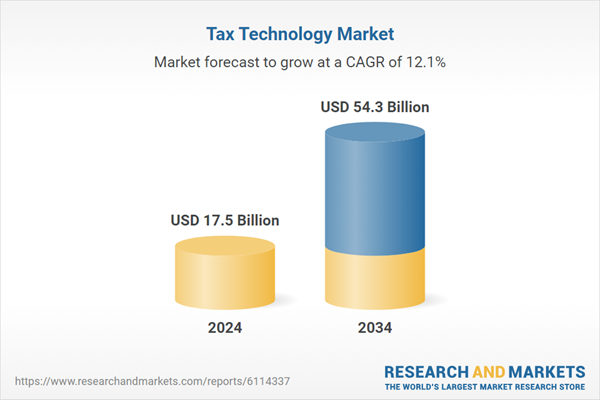Enterprises are increasingly embracing intelligent, cloud-based platforms that use artificial intelligence and machine learning to automate tax-related processes - from calculations to reporting to audits. This shift is not only helping reduce human error but also ensuring real-time compliance and more consistent regulatory alignment across borders. Automation is proving particularly valuable in reducing resource-heavy manual tasks and strengthening the strategic role of tax departments. By enabling seamless data extraction, validation, and application, these platforms significantly minimize operational disruptions while ensuring that businesses remain audit-ready at all times. As a result, tax teams are becoming more efficient and strategic, shifting from transactional roles to advisory functions focused on planning and decision-making.
A significant trend shaping the market is the widespread adoption of cloud-based tax platforms, particularly among mid-sized to large enterprises and professional services firms. These solutions offer integrated data processing, seamless connectivity with accounting software and enterprise resource planning (ERP) systems, and a unified framework to manage tax obligations across jurisdictions. This capability is particularly vital for businesses operating in multiple countries, where tax rules often vary and evolve rapidly. The flexibility of these platforms ensures adaptability to regulatory changes and supports scalable growth without overwhelming internal systems or resources.
In terms of market segmentation by component, the industry is categorized into solutions and services. In 2024, the solutions segment held the largest share, contributing approximately 65% of the global market. This segment is expected to grow at a CAGR of 11% from 2025 to 2034. The increasing demand for smarter tax planning tools that offer real-time visibility, automated workflows, and advanced analytics is fueling growth in this area. Solutions are being designed to help organizations proactively manage risks, stay ahead of tax law changes, and eliminate unnecessary manual interventions.
Organizations are moving toward end-to-end platforms that centralize tax-related tasks such as compliance monitoring, return preparation, and reporting. These all-in-one tools allow real-time access to data, reduce duplication, and automatically flag discrepancies based on the latest legal guidelines. This consolidation enhances efficiency, allowing tax teams to focus on strategic tax planning while reducing the chances of penalties or compliance lapses.
When segmented by type of tax, the market includes direct tax management, indirect tax management, and international tax management. The direct tax management segment dominated the market with a 30% share in 2024 and is forecast to grow at a CAGR of over 11.3% during the forecast period. The increasing complexity of national and international tax codes and the push for accurate, timely filing have made cloud-enabled direct tax platforms particularly valuable. These systems provide centralized control, automated compliance updates, and enhanced integration with existing financial systems. They support frequent tax calculations, automate reviews, and seamlessly align with ERP and payroll tools, helping organizations maintain compliance across multiple jurisdictions.
The efficiency and scalability of direct tax platforms make them especially useful for businesses with cross-border operations. These tools support swift decision-making by offering real-time analytics and enabling dynamic adjustments to tax strategies as new regulations are introduced. Centralized cloud-based systems also help reduce maintenance burdens on IT teams while improving the overall reliability of tax functions.
In North America, the US accounted for the largest share of the regional tax technology market, representing nearly 80% with revenue of USD 6.2 billion in 2024. The demand in the country is being propelled by growing digitization across sectors, increasing adoption of automated tax software, and supportive federal regulations that promote e-filing and electronic tax processes. Additionally, a surge in low-code and no-code platforms is making it easier for companies to deploy tax technology without heavy IT involvement.
The market’s growth is further supported by an industry-wide focus on upskilling tax professionals to manage digital tools more effectively. Collaborations between technology providers, accounting firms, and academic institutions are helping bridge the talent gap in tax advisory services. With audit risk on the rise and tax laws constantly changing, enterprises are seeking solutions that not only streamline compliance but also provide insights for more informed decision-making. Automated workflows, AI-powered validations, and seamless ERP integration are becoming standard as companies move toward building more agile and future-ready tax departments.
Key players shaping this space include Intuit, Microsoft, Oracle, PwC, Ryan, SAP, Thomson Reuters, Vertex, and Wolters Kluwer. These companies are leading innovation by offering scalable platforms tailored to the evolving tax landscape.
Comprehensive Market Analysis and Forecast
- Industry trends, key growth drivers, challenges, future opportunities, and regulatory landscape
- Competitive landscape with Porter’s Five Forces and PESTEL analysis
- Market size, segmentation, and regional forecasts
- In-depth company profiles, business strategies, financial insights, and SWOT analysis
This product will be delivered within 2-4 business days.
Table of Contents
Companies Mentioned
- ADP
- Avalara
- Drake Software
- H&R Block
- Incentify
- Intuit
- Microsoft
- Oracle
- PwC
- Ryan
- SAP
- Sovos Compliance
- Tax Technologies
- TaxAct
- TaxJar
- TaxSlayer
- Thomson Reuters
- Vertex
- Wolters Kluwer
- Xero
Table Information
| Report Attribute | Details |
|---|---|
| No. of Pages | 190 |
| Published | July 2025 |
| Forecast Period | 2024 - 2034 |
| Estimated Market Value ( USD | $ 17.5 Billion |
| Forecasted Market Value ( USD | $ 54.3 Billion |
| Compound Annual Growth Rate | 12.1% |
| Regions Covered | Global |
| No. of Companies Mentioned | 20 |









